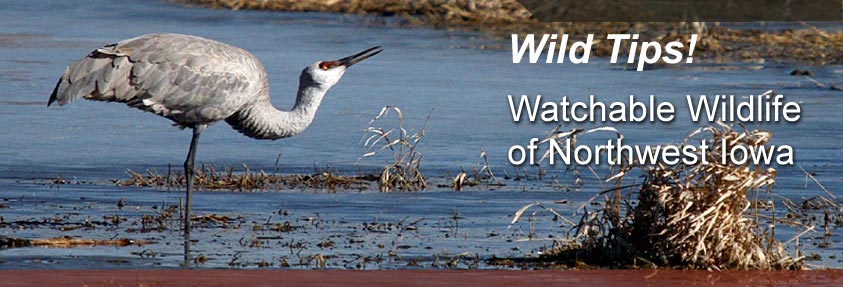 |
||||||||||||||||||
 |
||||||||||||||||||
|
Now that you have read about all of these great sites, it’s about time to get out and visit them. Here are some helpful hints on how to get the best view of the wildlife on your journey: Stick to the Sidelines – • Use binoculars, spotting scopes or telephoto lenses to view details. • Give nests a wide berth. Your visit may lead a predator to the nest. Fade into the Background – • Wear natural colors and unscented lotions. • Remove glinting sunglasses. • Learn to hide – vehicles, boats, grass and brush can help conceal your form. • Stop, look and listen … before you cross the path. Move slowly and stop frequently for the best experience. Many hidden animals come clearly into view if you let them tell you their location. Respect their Space – • Resist the temptation to “save” baby animals. Mom is usually watching from a safe distance even if you do not see her. • Don’t share your lunch! – Human food may harm wild digestive systems and get animals hooked on handouts. • Patience is a virtue! – Savor the experience of being in an animal’s home. Absorb all that you can. Resist the urge to throw a rock just to see the flock fly. • Practice stress reduction for everyone. If you see an animal tapping its foot, bobbing its head or raising its wings for flight – retreat. These animals are expending valuable calories which could be used for raising young, surviving in the elements, or migrating. • Take the round-about route. If you must advance, don’t go directly toward the animal or nest. Use your Senses – • Tap into all of your senses – smell, taste, touch, hearing and sound for the most well rounded wildlife encounter. • Look for the little things in life. Take in the foreground before expanding to the wide view. • Use your peripheral vision rather than turning your head. • Spot the unusual – out of place shapes and motions can be a key to locating animals or homes. • Silence can be louder than noise! Animals may fall silent when a predator is passing through. Think like an Animal – • Borders are best. The edge between two habitat types is often the best place to see residents of both places. • Look for a “highway” of sorts – trails, intersections, perches, drinking sites and ledges overlooking open areas are all key locations for spotting wildlife. • Take note of the season. Are animals shopping for a mate, feathering their nest, fattening up for winter, or preparing for a road trip? The answer will give you clues as to where to look. • Be an early bird or a night owl. Dawn and dusk are the best bet for finding animals out and active. • Bring a raincoat! Just after a rain is a great time to observe animals in action catching displaced insects or flooded-out rodents. How to Use Binoculars: • Find the subject with your unaided eyes. • Bring the eyepiece just under your eyes. • Sight the subject over the tops of the eyepieces. • Slowly bring the binoculars to your eye. HUNTING SEASON TIPS: Remember that many of the locations that are great for bird and wildlife watching are also great for hunting! In fact, fees from hunting licenses and equipment often help purchase and manage wildlife areas. The Watchable Wildlife Sites which are open for hunting are listed on the location descriptions. Be sure to be aware of the various seasons and plan your visit and your clothing choice accordingly. (It is best to wear a bright orange vest or hat to make yourself more visible.) You can check the various hunting season dates by visiting this link: |
||||||||||||||||||
|
Wild Tips
|
||||||||||||||||||
| Return to Previous Page | ||||||||||||||||||